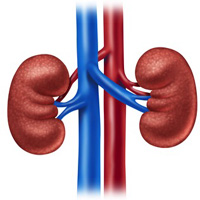Antegrade placement of JJ catheter in the treatment of malignant ureteral obstruction: Retrospective analysis of a single centre

Accepted: March 14, 2022
All claims expressed in this article are solely those of the authors and do not necessarily represent those of their affiliated organizations, or those of the publisher, the editors and the reviewers. Any product that may be evaluated in this article or claim that may be made by its manufacturer is not guaranteed or endorsed by the publisher.
Authors
Objective: The aim of the present study was to examine the results of antegrade JJ stent placement in upper urinary tract obstruction in patients where retrograde placement was not possible.
Methods: In this retrospective study, patients who underwent antegrade JJ stent placement for malignant ureteral obstruction in the urology clinic of a university hospital between January 1, 2018 and December 31, 2020 were included in the study. JJ stent was placed under local or general anaesthesia guided by ultrasonography and fluoroscopy. Age, gender, kidney function values, pathologies causing obstruction, and complications of the patients were examined.
Results: In this study, 40 patients (16 men, 24 women) who underwent antegrade JJ stent placement were included. The mean ages of the women and men included were 51 (31-91) years and 62.5 (26-81) years, respectively. In all, antegrade JJ stenting was performed in 61 renal units of these patients. Of these, 21 were bilateral, 11 in the right collecting system and 8 in the left collecting systems. Clinical and technical success was achieved in 59 of the 61 procedures (96.6%). Arteriovenous fistula developed in only one patient, whereas no serious complications such as massive bleeding, resistant hematuria or pseudoaneurysm occurred in the remaining patients. The procedure was completed in a mean time of 15-30 minutes.
Conclusions: Antegrade JJ stent placement is a procedure with a high success rate and low risk of complications that can be used in patients with severe ureteral obstruction owing to malignant or benign aetiologies. This method should be applied in centres experienced in malignant ureteral obstruction and on patients where retrograde placement was not possible. Furthermore, it should be considered as an alternative treatment option to open surgery as it can be performed under local anaesthesia in patients at a high risk of anaesthesia.
How to Cite
PAGEPress has chosen to apply the Creative Commons Attribution NonCommercial 4.0 International License (CC BY-NC 4.0) to all manuscripts to be published.

 https://doi.org/10.4081/aiua.2022.1.91
https://doi.org/10.4081/aiua.2022.1.91



